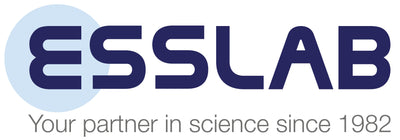Effective releasing agent for calcium in the presence of sulphate and phosphate, as well as for magnesium in the presence of aluminium.
Atomic absorption spectroscopy (AAS) is a high throughput, easy-to-use, and inexpensive technology primarily used to analyse compounds in solution by applying wavelengths of electromagnetic radiation. AAS is commonly used in flame atomic absorption spectrometry (FAAS) and graphite furnace atomic absorption spectrometry (GFAAS). Relying on the property of individual atoms to differentially absorb radiation wavelengths, this technology has a plethora of applications including in the analysis of water, food and beverages, and pharmaceuticals, as well as in mining operations to determine the percentage of precious metal in rocks.

The Importance of Releasing Agents
In the process of AAS analysis, analytes are first atomised, in which they are stripped from the solvent, volatilised and, if necessary, dissociated into free atoms. This process allows the characteristic wavelengths of each atom to be emitted and recorded later in the process. The atoms are then excited by a specific energy, raising the electrons in these atoms up one energy level. As the atoms return to their original energy state, they emit light. Because the wavelength of this light is characteristic of the element that produced it, analysts are able to determine specific elements and their concentrations within a sample by measuring the wavelength and intensity of this light and comparing it to a standard.
Sample atomisation is typically carried out using one of two methods: flame atomisation or electrothermal atomisation. When using flame atomisation, it is important to minimize the formation of non-volatile compounds as these can interfere with subsequent quantitative analysis. As such, a releasing agent — a species that preferentially binds to chemical interferents and so prevents its interaction with the analyte — can be added to the sample. For instance, the addition of releasing agents containing lanthanum or strontium ions are effective at complexing with phosphate ions, which can decrease the sensitivity of calcium measurements.
Inorganic Ventures: LACB1 Releasing Agent
Inorganic Ventures, are a manufacturer providing the highest quality Certified Reference Materials (CRMs), offers a range of products to ensure accurate and precise AAS results. The Inorganic Ventures releasing agent, LACB1, contains 1% lanthanum set in a hydrochloric acid matrix (3% v/v) for stability, and is available at 500ml. Certified to the ISO 9001 standard, this product is an effective releasing agent for calcium in the presence of sulphate and phosphate, as well as for magnesium in the presence of aluminium. The use of LACB1 will reduce or eliminate interference and improve accuracy of measurements of the target analyte. ESSLAB also provides custom releasing agents that are available upon request.
Inorganic Ventures are accredited to ISO 17034, ISO 17025, as well as ISO 9001 and are fully supported by Transpiration Control Technology (TCT) which has extended the shelf life of products up to 5 years.
All Inorganic Ventures products, including their releasing agent, undergo two independent validated assay methods that are performed with a reliable QC standard. Indeed, quality is guaranteed as every LDPE, HDPE, PVC, glass, and Teflon bottle is processed by chemical treatment, plus full UV inspection is ensured for detection of contaminants. All products are dispensed, sealed, and documented for shipment to your exact specifications.

Leave a comment